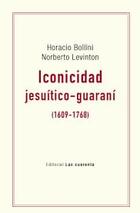In the intervals, in the interstices of history, the recovered piece speaks: Warburg alluded to an "iconology of the interval." This piece of cedar or sandstone that awakens among the rubble, even mutilated, emerges as a discursive whole. During the time it remained buried, it never ceased to interpellate its own ghost; it never lost its inner eyes.
An angel carved in cedar. Its drapery recalls that the missionary experience takes place within the historical arc of the Baroque. But this image escapes periodization. The carving's cheekbones are Guaraní. Its character is hieratic. The gaze reminds us that a spirit inhabits it. In the imagery of the Jesuit-Guarani missions, those vanished images (sculptures, paintings, altarpieces) interject themselves interrogatively with the voices within the images that survived; voices where Christian prayer and the daemon that inhabited the ce...read more
Shopping cart
Loading cart
Important notices
|
|
Recordando a André Rouillé: Su legado en la fotografía André Rouillé 1948 - 2025 |
|
|
Libros de filosofía y co. Disponibles en Librería Herder |
|
|
Revista Filosofía & Co. nº 9 Nueva revista de filosofia divulgativa y actualidad |
|
|
"Espacios de la filosofía" - Mauricio Beuchot - Novedad Herder México |
|
|
Revista Filosofía & Co. nº 8 Nueva revista de filosofia divulgativa y actualidad |
Pay safely with:


In the webshop
New
|
|
La Peste Negra, 1346-1353 69776 $599.00 -15.00% $509.15 |
|
|
El nacimiento del purgatorio 69775 $729.00 -15.00% $619.65 |
|
|
Breve historia del conflicto entre Israel y Palestina 69487 $289.00 -15.00% $245.65 |
|
|
Jaques Derrida, el excéntrico 69901 $1,200.00 -0.00% $1,200.00 |
|
|
Las obras del amor 69912 $700.00 -0.00% $700.00 |
In the press
Promotions
|
|
Catolicismo: Historia y Doctrina 20117 $1,200.00 -50.00% $600.00 |
|
|
Basiswörterbuch 28205 $390.00 -50.00% $195.00 |
|
|
Manual de la Biblia 20641 $2,410.00 -50.00% $1,205.00 |
|
|
Panorama B1.2 Curso 46507 $235.00 -35.00% $152.75 |
|
|
Panorama A1 Ejercicios. Ubungsbuch 39886 $395.00 -37.00% $248.85 |








